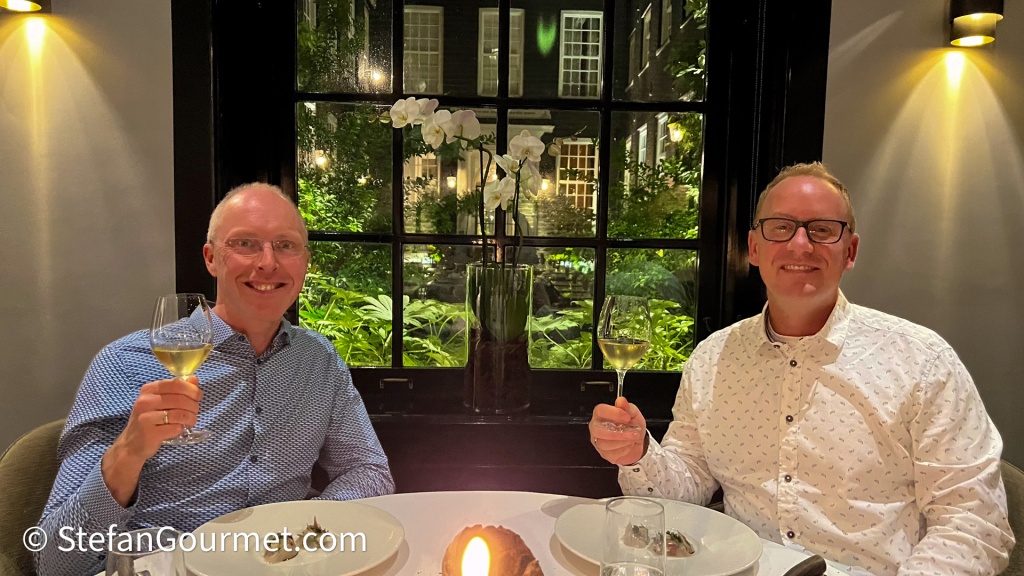
Restaurant Vinkeles in the Dylan Hotel in a historic building in the historic canal district of Amsterdam has been awarded its second Michelin star this year, so that was a good reason to go there to celebrate my friend Robert’s birthday. Vinkeles has held a single Michelin star since 2009 with chef Dennis Kuipers. As of 2022, Jurgen van der Zalm took over as chef, who had been working at Vinkeles since 2008 and had worked his way up.
There are a la carte options (3 starters, 3 mains, 3 desserts), a 7-course vegetable menu for 145 euros, and a 7-course chef’s menu for 185 euros, of which the main course can be upgraded to Wagyu A5 with Imperial caviar for a surcharge of 65 euros. We opted for the latter. Wine pairings are 14.50 euros pers glass. There are also about 10 premium wines by the glass using Coravin. The maître-sommelier seemed to be slightly offended when I asked to see if any of the regular wine pairings could be upgraded to one of the premium wines. The assistant sommelier took up the challenge (because the premium wines were not selected to match with the dishes) and managed to get us a very nice upgrade (more about that later).
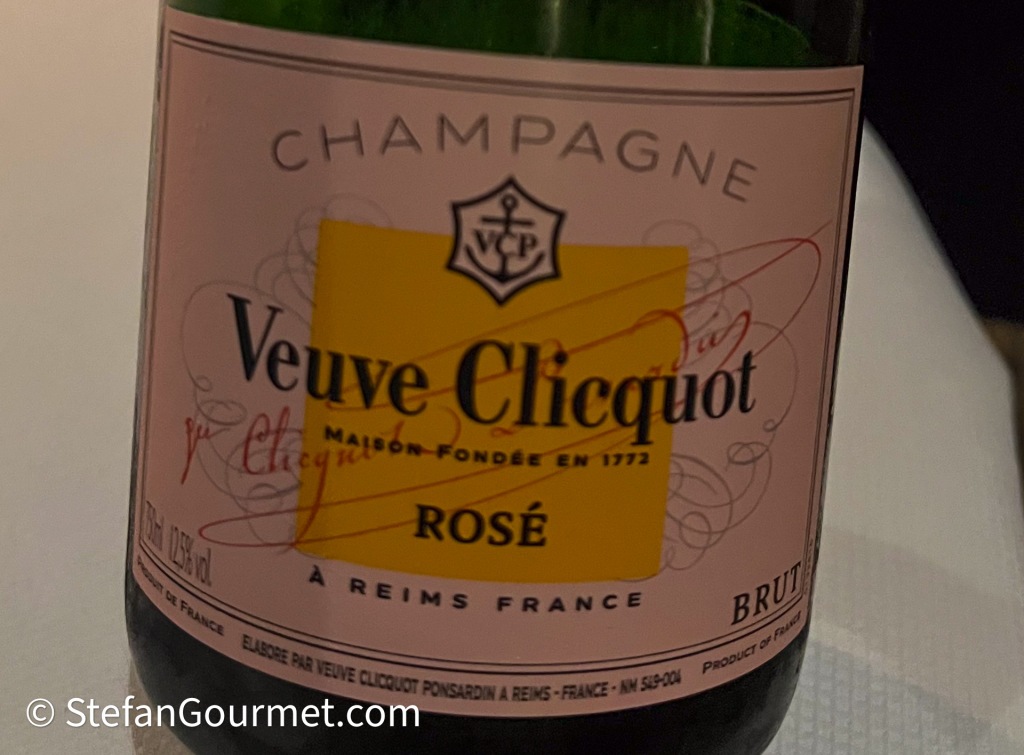
We started with a glass of Veuve Clicquot rosé champagne.
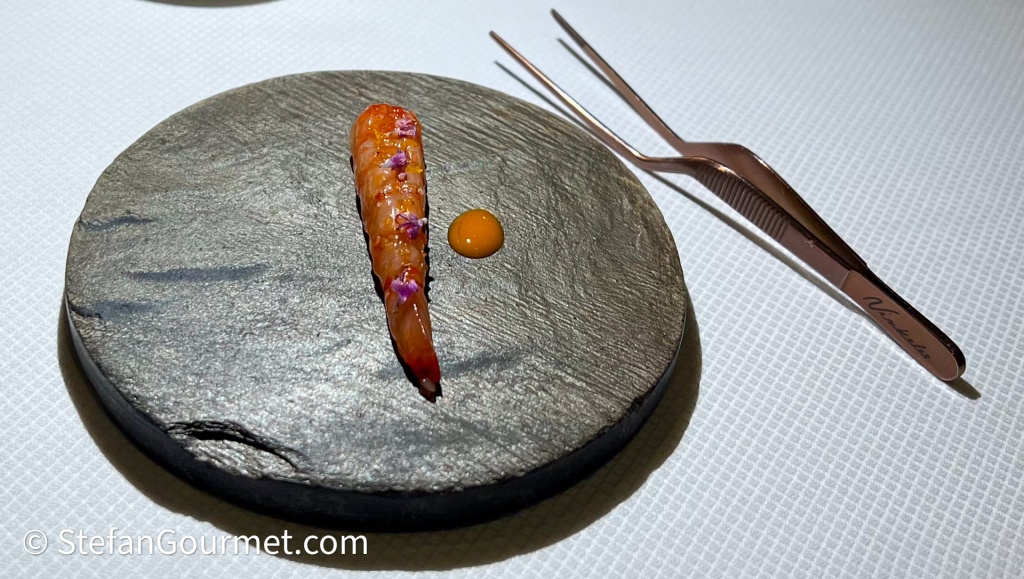
The first amuse bouche was a raw red deep sea shrimp, served with a drop of orange sauce and flavor from the head and shell of the shrimp. Very flavorful and a good combination with the orange.
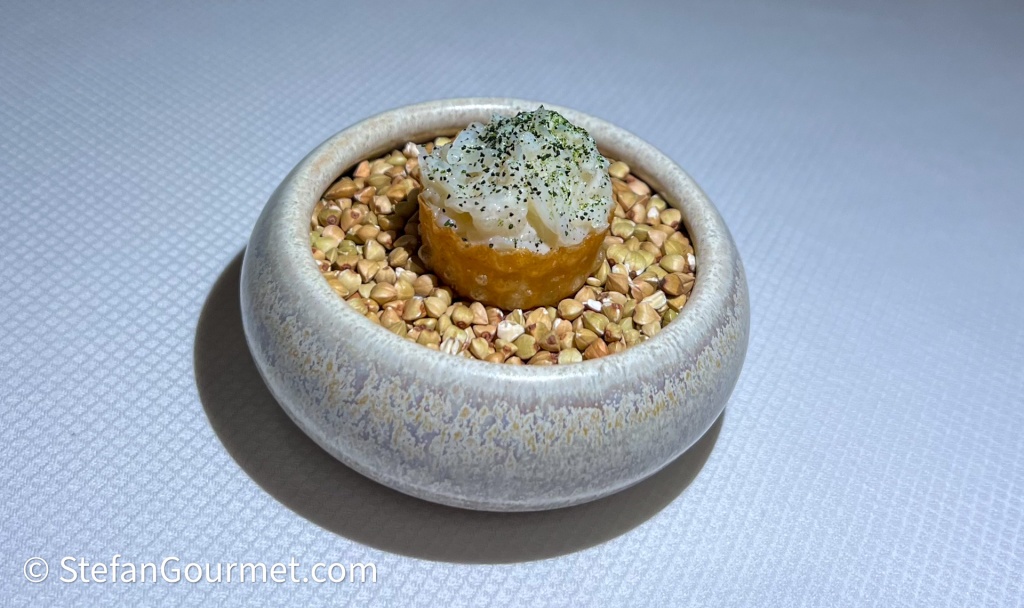
This tartlet was also very flavorful and amazingly crispy and brittle.
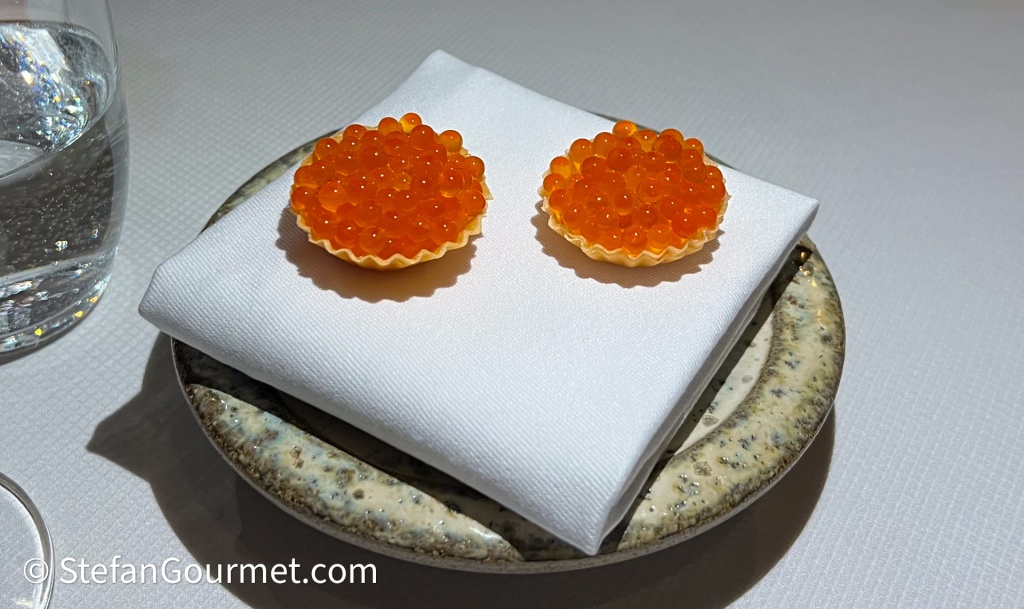
The tartlet with trout roe and smoked eel was a flavor explosion.
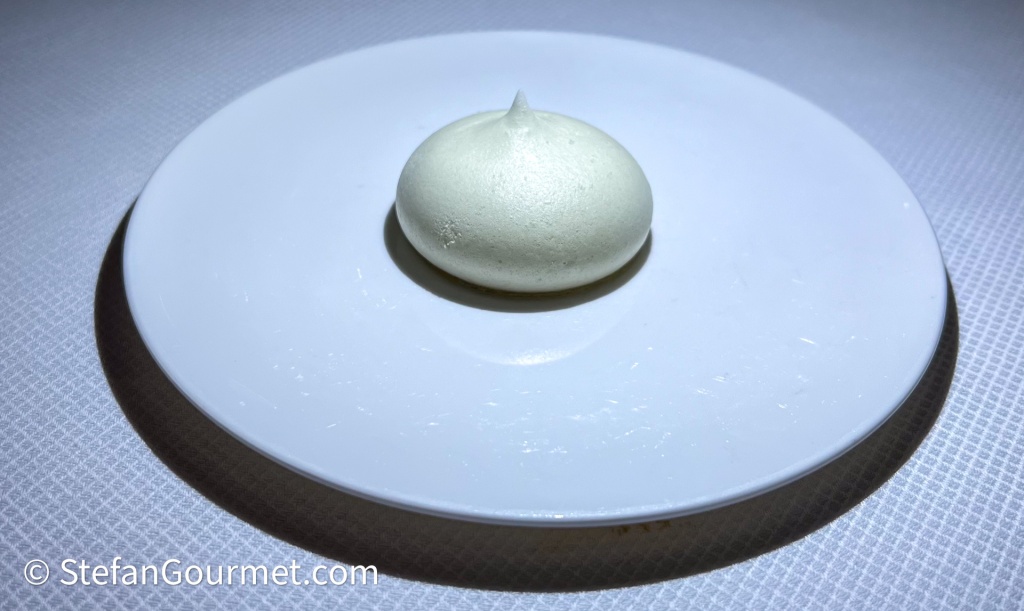
The final amuse bouche was served under a meringue…
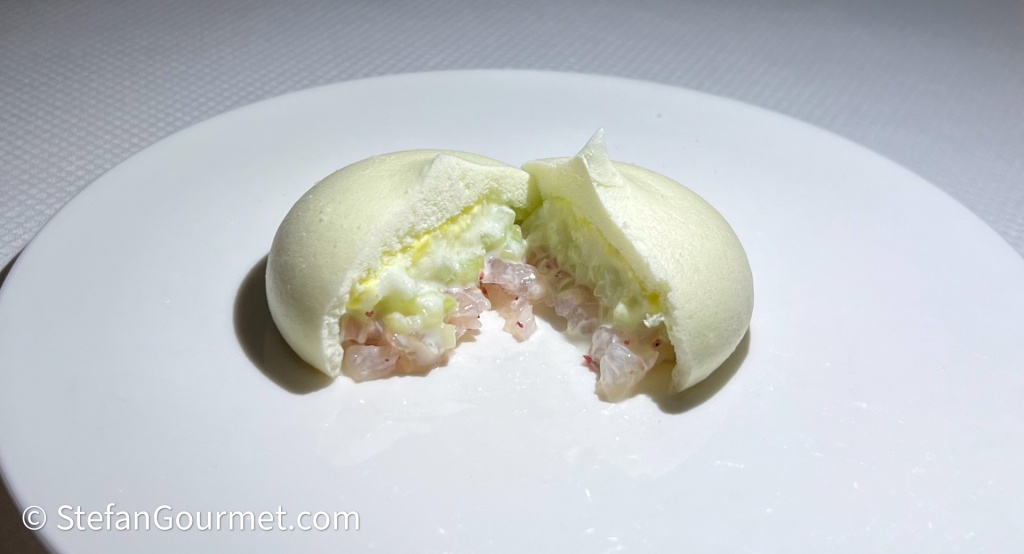
…with sea bass tartare and cucumber inside.
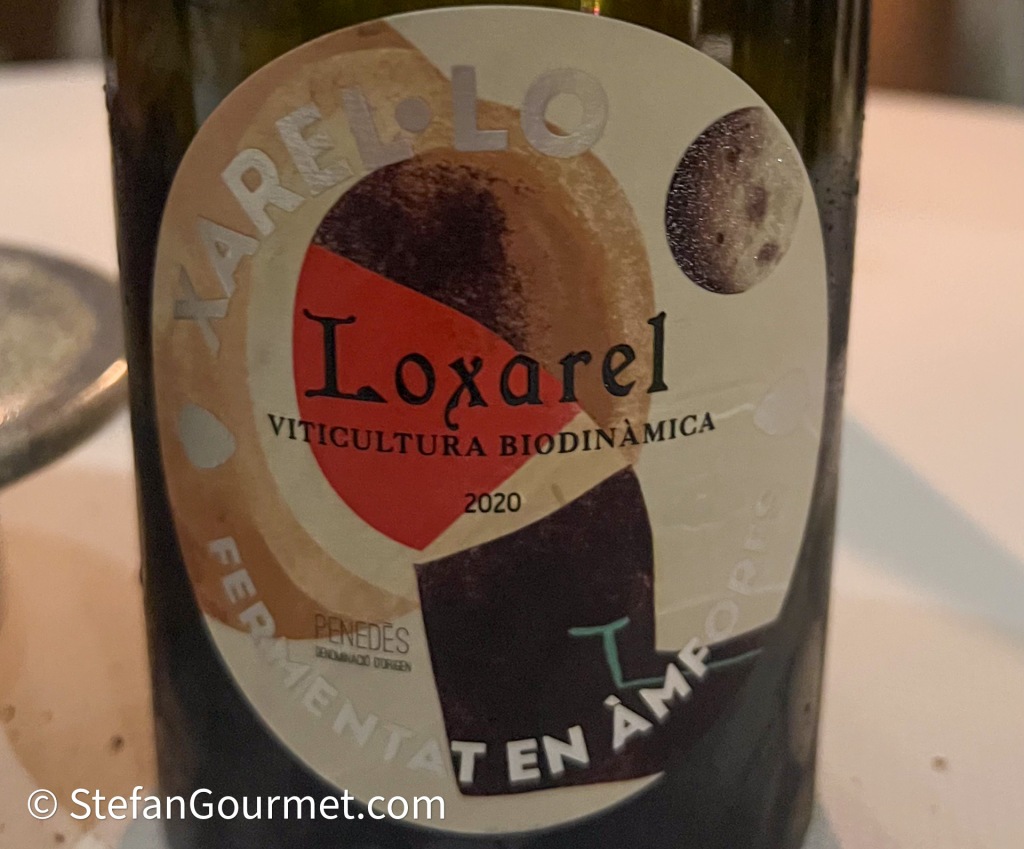
The first wine of the wine pairing was a Xarel.lo from Penedès in Spain, fermented in amphoras. Xarel.lo can be very acidic and wines aged in amphoras can be very oxidized, but this wine was non of the above and very nicely balanced and complex.
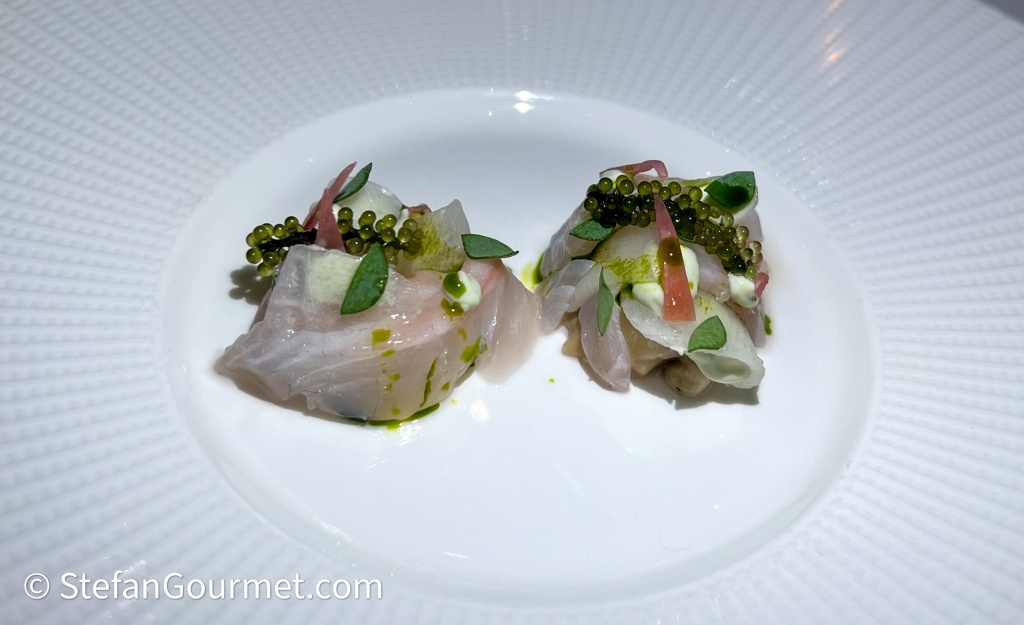
It was an very good pairing for the raw seabream with oyster, elderflower, white radish, and myoga. The nice thing about this dish was that it combined texture of the raw sea bream with the flavor of oyster. The wine brought out the oyster. The dish was not underseasoned, but I think this dish and the wine pairing would be even better with a smidge more salt, as the wine had a lot of body for such an elegant dish.
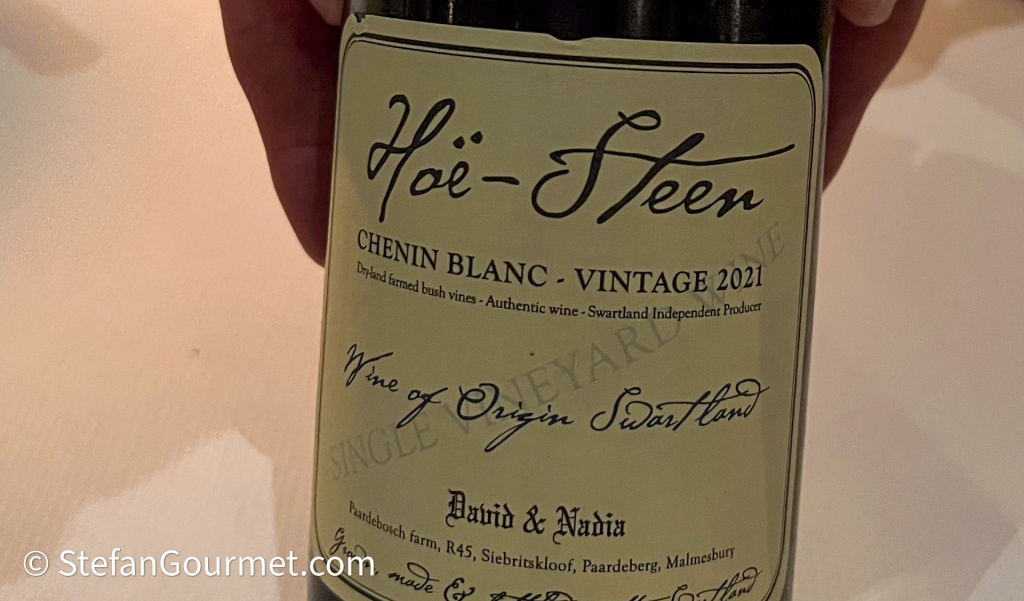
Based on our request to see if any wines of the pairing could be upgraded, the assistant sommelier Jasper replaced the regular Chenin Blanc from the Loire Valley in France with a Hoë Steen Chenin Blanc by David & Nadia from Swartland in South Africa (44 euros per glass). This was a great wine with a great balance and ‘oily’ texture that was an outstanding pairing with the langoustine.
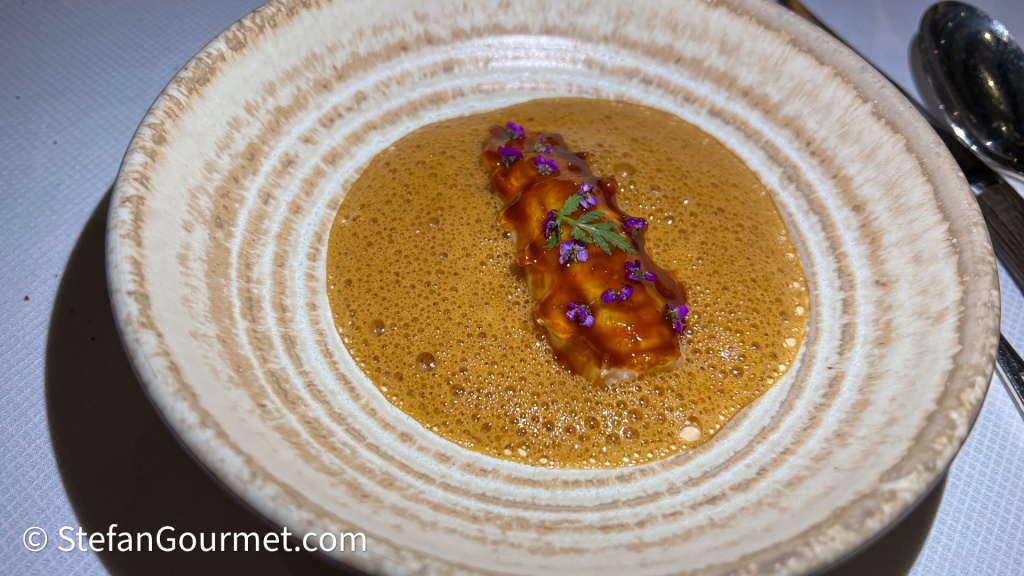
The langoustine was cooked just right with perfect texture, and lacquered with a reduction of a stock made from the shells and heads. The nashi pear brunoise provided a nice textural element.
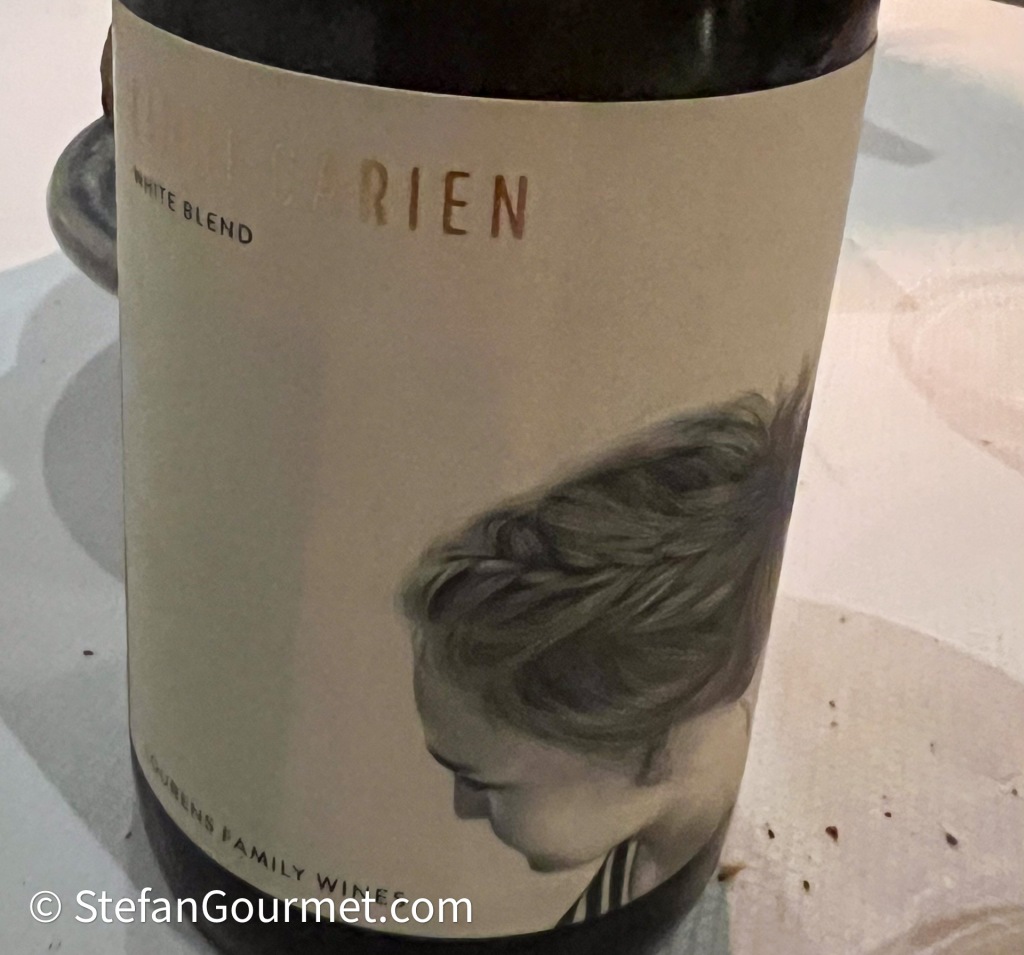
The following wine was also from South Africa, a Lindi Carien White Blend by Lourens Family Wines. It is a blend of Chenin Blanc, Palomino and Verdelho from Stellenbosch and Paardeberg.
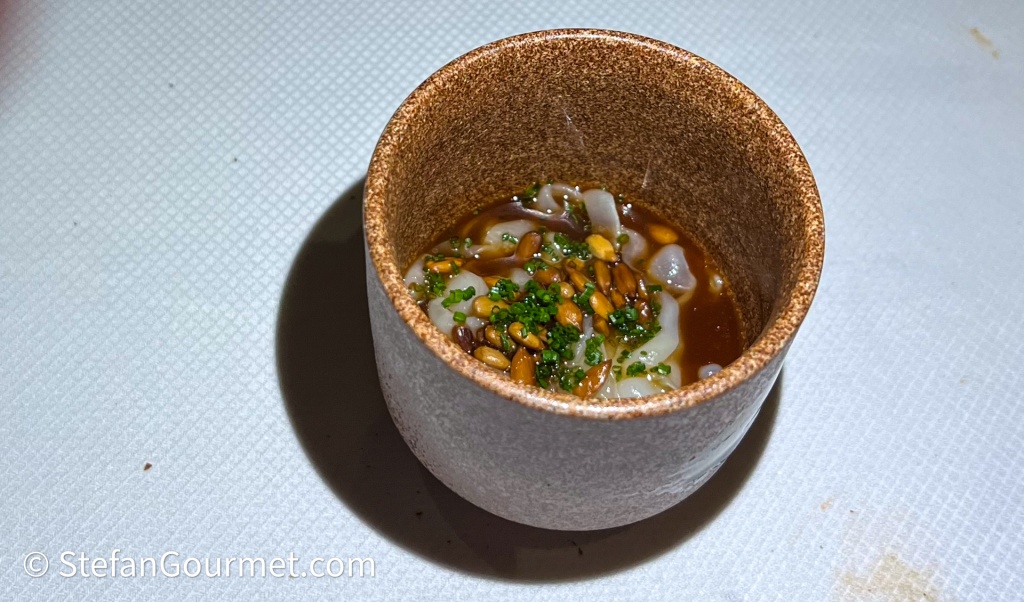
It was a very good pairing for the Chawanmushi, a Japanese dish of duck egg steamed in a cup with squid, fig leaf oil, crab, and jasmine broth, and topped with toasted sunflower seeds. Excellent flavor and texture with nice contrasts.
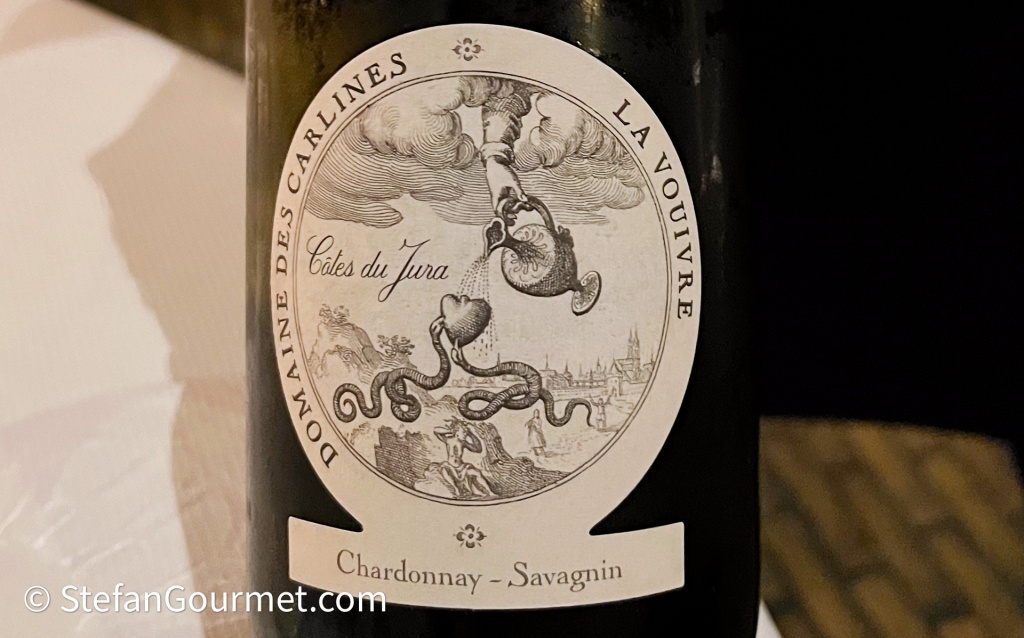
Next was a Chardonnay-Savagnin blend from the Côtes du Jura in France, that was luckily only slightly oxidized (as wines from Jura can be very oxidized).
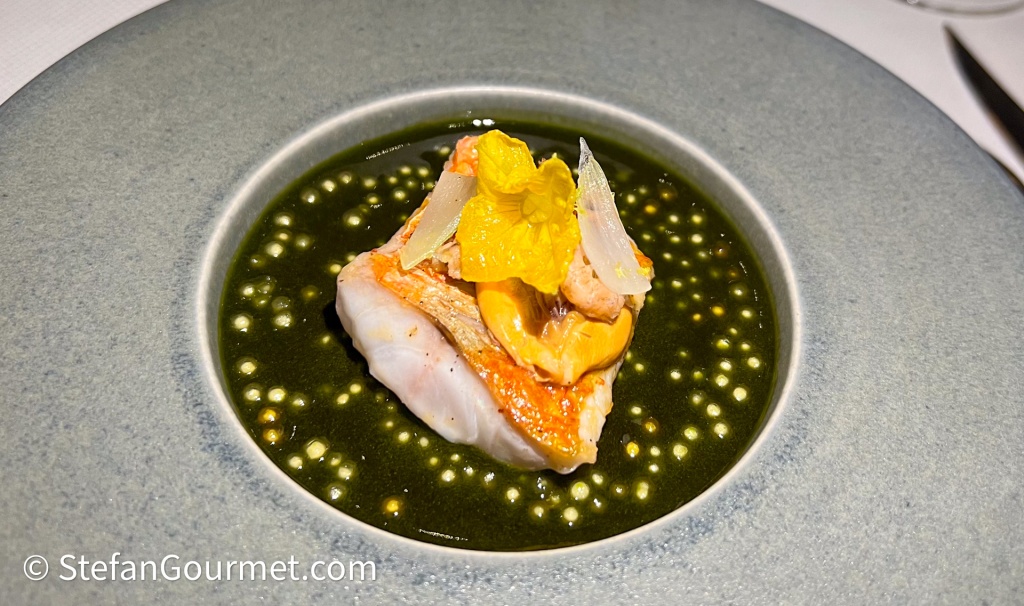
It was a very good pairing for the red mullet with suquet (Spanish fish soup), mussel, and grey shrimp. The red mullet had excellent texture, which is quite a feat as red mullet is very difficult to cook just right. Again it was not underseasoned, but I would have preferred a smidge more salt on the red mullet.
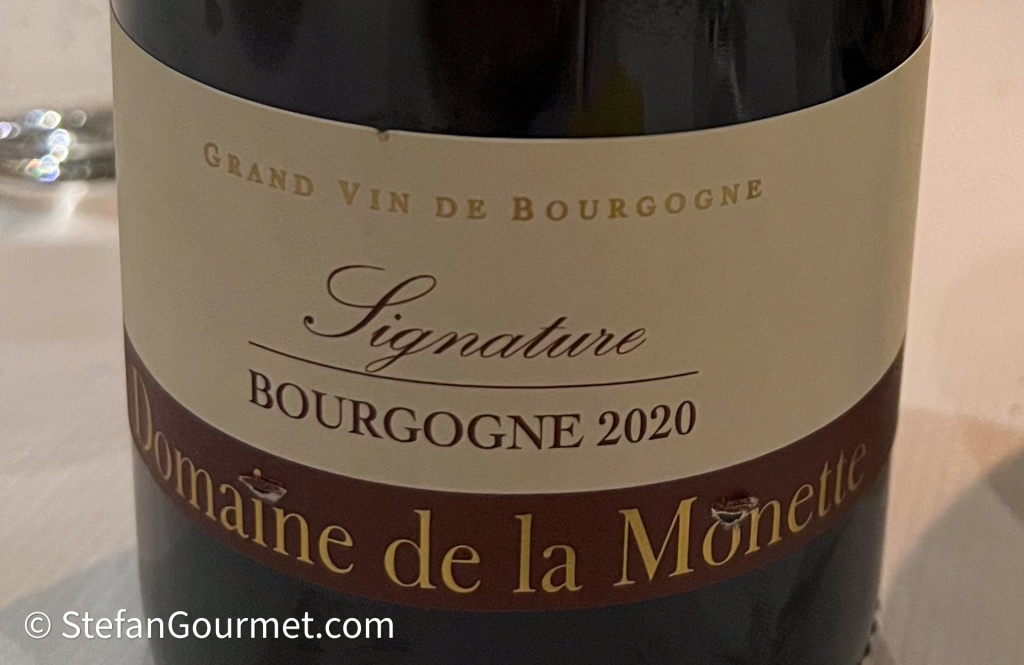
The following wine as an unusual red Burgundy, as it was a very ripe style that was more reminiscent of a Californian Pinot Noir. It had more color and was more fruity than regular red Burgundy. It was an attempt to pair something with the next dish that would also fit in with the wine that came after.
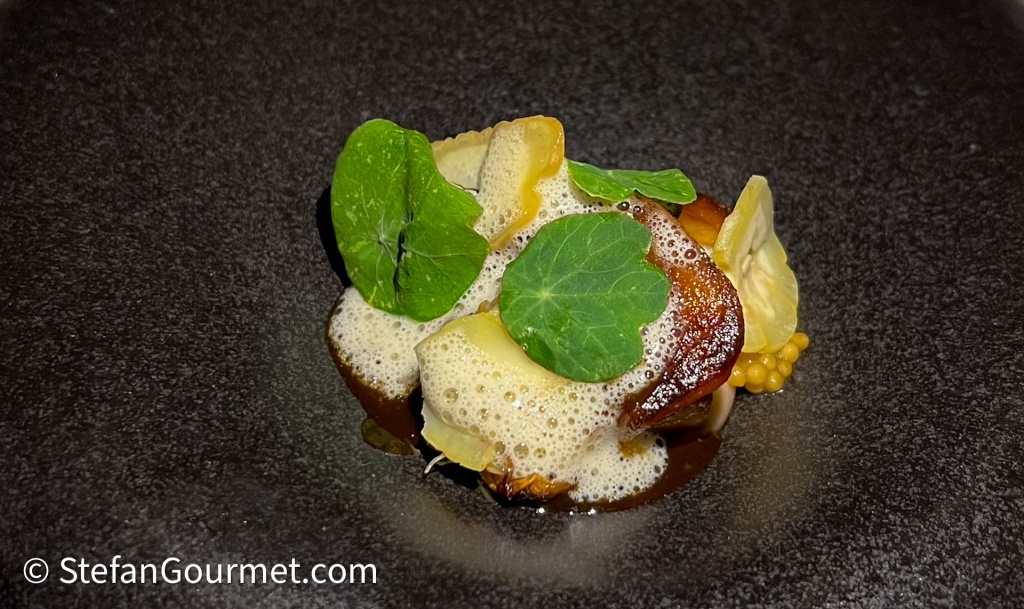
The next dish was fresh porcini mushrooms with chestnut, molasses, Sherry, and nasturtium. The molasses and chestnut made this a sweet dish that didn’t really work with the acidity of the wine. I think a medium Sherry would be a better pairing, but according to the assistant sommelier the high alcohol in Sherry would not work with the chestnuts in the dish. The Burgundy was selected to match the earthiness of the mushrooms with the earthiness of red Burgundy, but this Burgundy wasn’t earthy (but fruity), and the main element of the dish was its sweetness. So it seems the chef created a problem for the sommeliers that was hard to solve. Perhaps it would be better to serve this dish after the beef as its sweetness could be a bridge towards dessert?
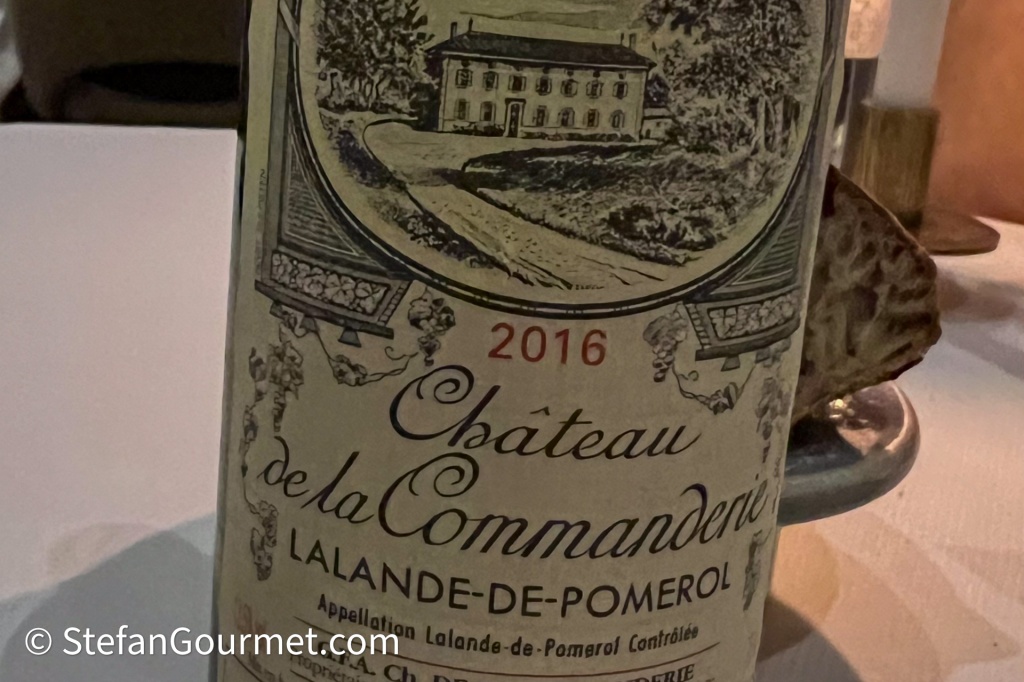
The next wine was a 2016 Lalande-de-Pomerol, a nice Merlot-dominated right-bank Bordeaux. The assistant sommelier also allowed us to taste a possible upgrade to a 2017 Château Giscours, a Cabernet-dominated Margaux from the left bank. But that wine was too fresh to work with the Wagyu, so we stayed with the regular pairing.
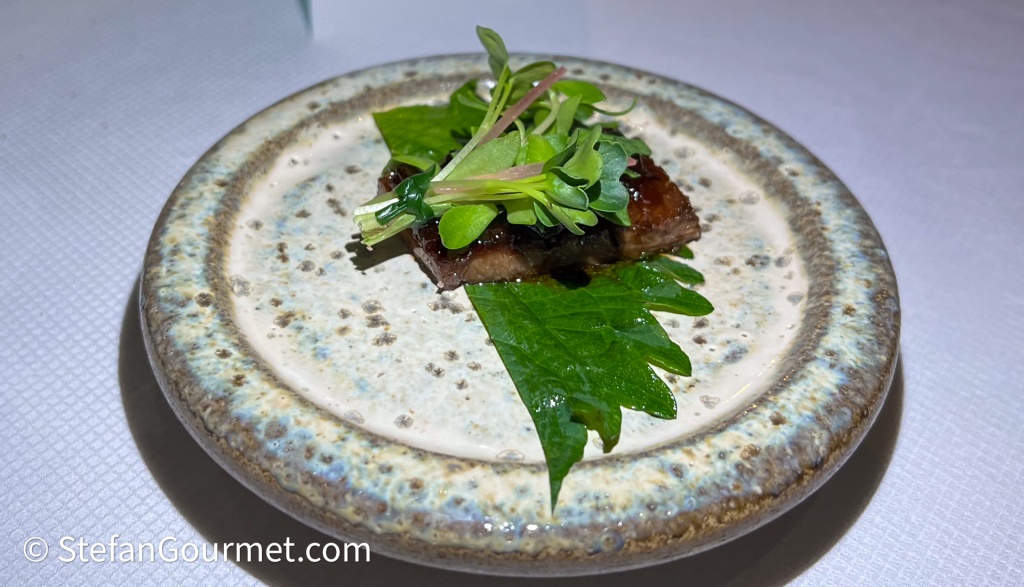
The Wagyu came in two parts, the first the tongue with shiso leaf.
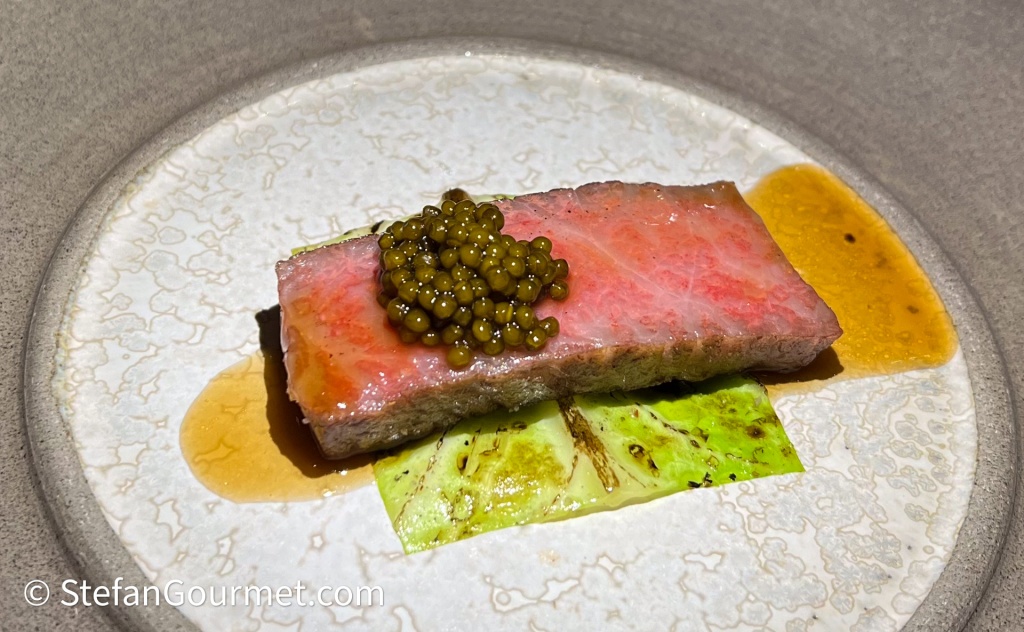
The main part was the Wagyu A5 with Imperial caviar, grilled cabbage leaf, and fermented garlic dashi. The Wagyu was very tender and flavorful and a nice combination with the caviar.
We skipped the optional cheese, as only a fixed selection of five cheeses was available (rather than a cheese cart).
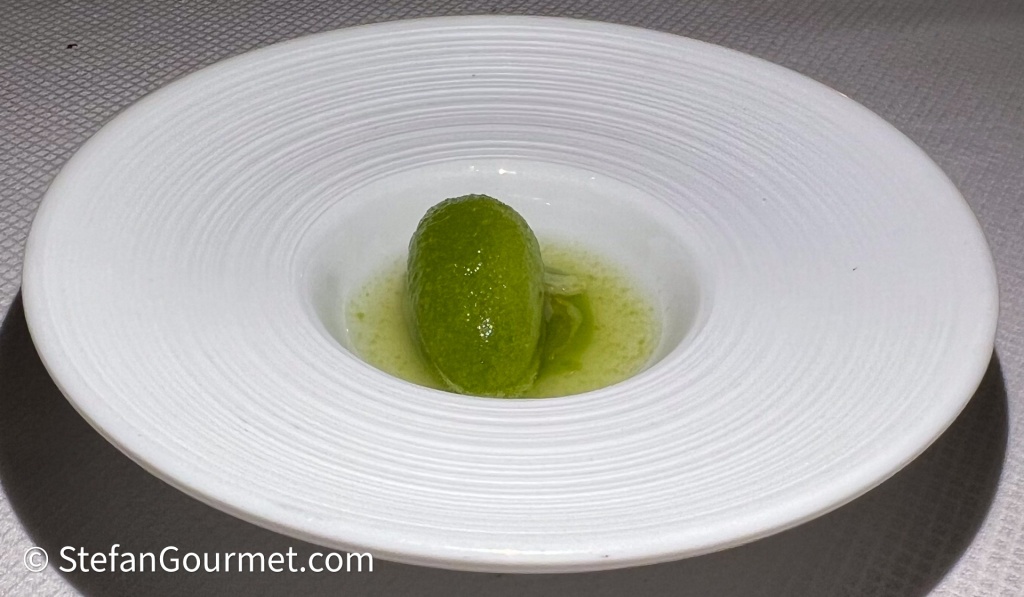
The palate cleanser was nice with cucumber, celery, and some other green ingredients I don’t remember.
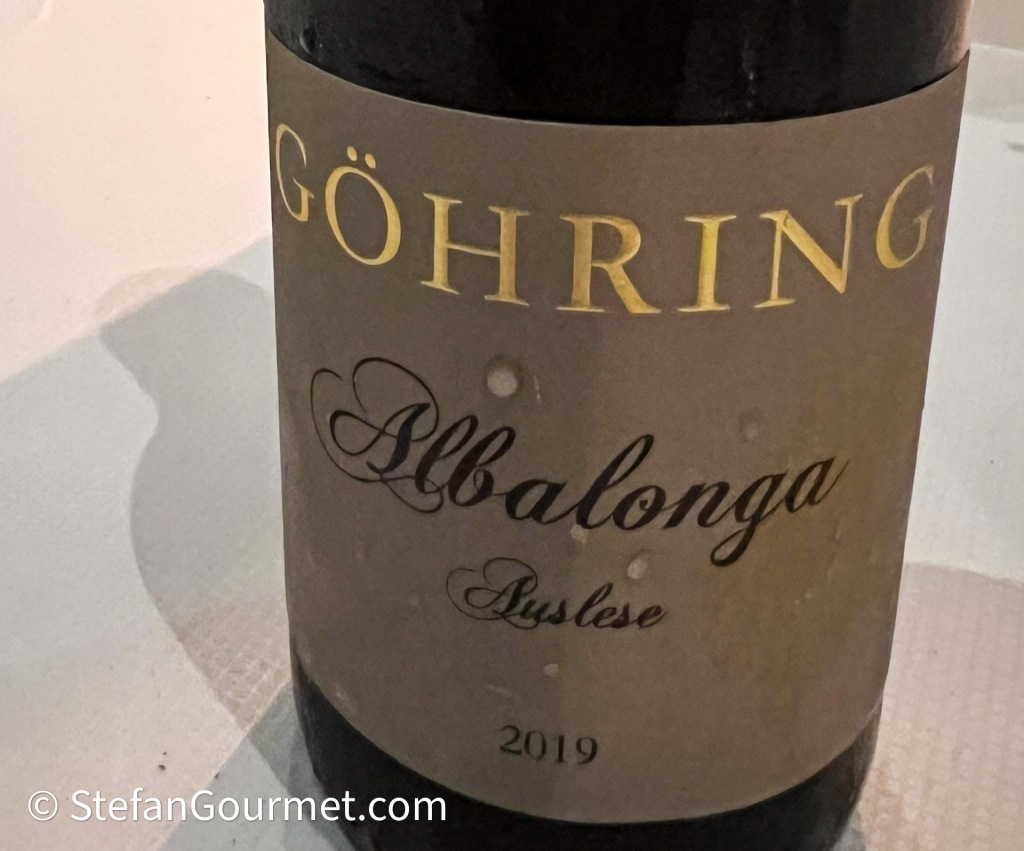
The dessert wine was an Albalonga Auslese from Rheinhessen in Germany. Albalonga is a cross of Rieslaner and Silvaner that I had not tasted before. It was mildly sweet with a nice acidity.
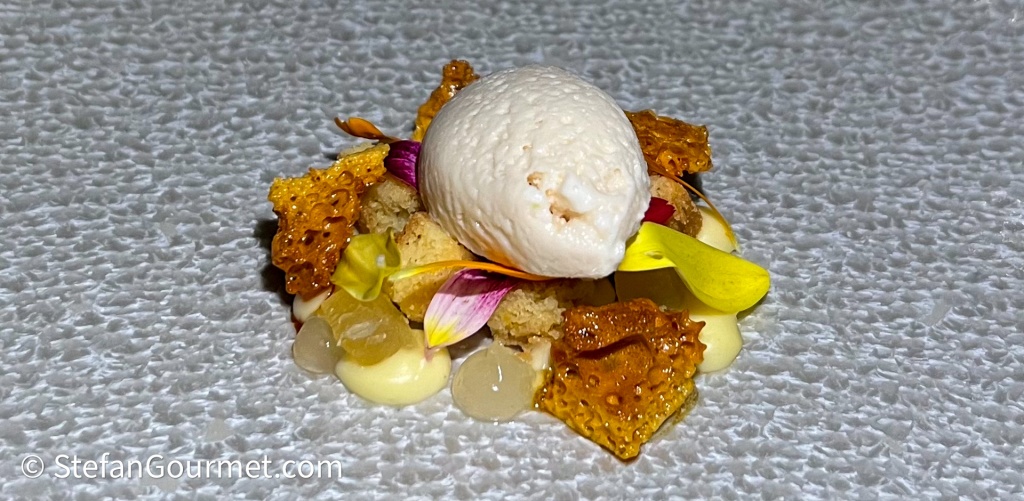
The dessert was bergamot, almond, kaffir lime, honeycomb, and verbena. The candied bergamot peel was the main flavor element. The wine brought out the bergamot, but was not sweet enough for the dessert.
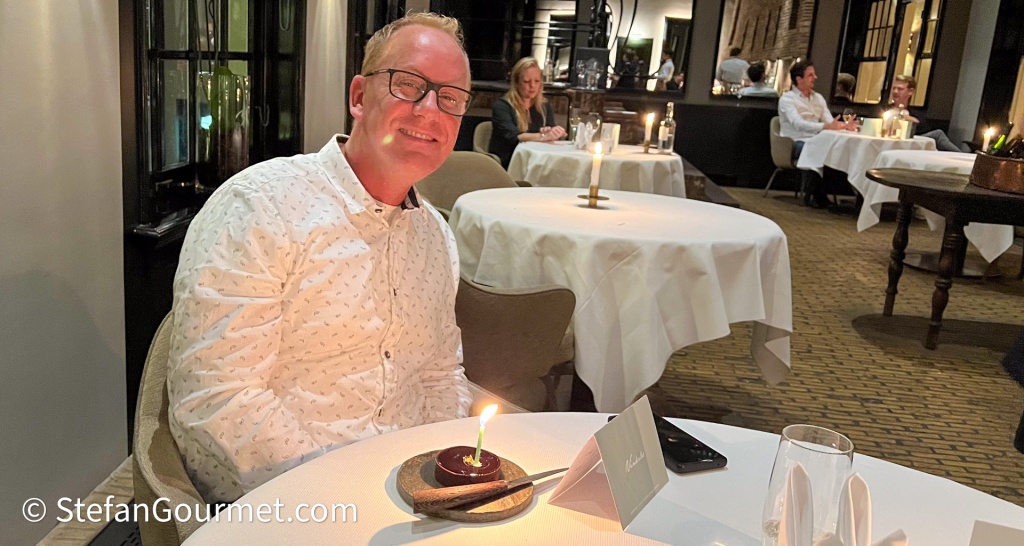
It was a nice touch that Robert got a birth card signed by the staff and a birthday cake with a candle.

Coffee or tea came with a nice selection of friandises.
The food at Vinkeles is excellent. Everything is technically perfect, especially the textures. The cuisine is quite international with Japanese influences being the most prominent. The portions are small, but thanks to an ample supply of crusty sourdough bread we did not leave hungry. The dishes are mostly protein with garnishes, with a single leaf here or there; there are no vegetables to speak of (I suppose that would be different if you order the vegetable menu). Most of the wines and wine pairings are very good, and the regular wine pairing offers good value for money. The porcini dish shows that the co-operation between the chef and sommelier could be improved. The service was good, although there was less serving staff than at most two star restaurants. I don’t mind that at all, but this is something to be aware of if you insist on being guided to the restrooms or someone coming to pull out your chair when you return from the restrooms. At first the service was a bit slow: we arrived at 7:35pm, the first amuse bouche was served at 7:55pm, and the first course of the chef’s menu at 20:35pm. After that the pace was fine. Coffee and friandises were served around midnight.
The two Michelin stars are certainly well deserved. This was a great first experience at Vinkeles and certainly to be repeated.


What an experience! Even with small portions, that seems like a lot of food. How long was your dining experience?
LikeLike
Hi Dorothy, we were there for about 5 hours (arrived at 7:30pm and left at 0:30am).
LikeLiked by 1 person
I can imagine! We don’t have anything like that here in Vermont!
LikeLike
Thank you for allowing us to share a very special experience. About the wines I can but read and learn . . . about the food > imagine, guess and wish I was there to taste myself. Somewhat unusual to get a virtually proteins-only dinner! The sea bass, tongue and mushroom dishes interested me the most . . . and, may I say, I would give my eyeteeth to own some of the serving dishes used !
LikeLiked by 2 people
Un altro gran bel ristorante. Auguri al tuo amico!
LikeLiked by 2 people